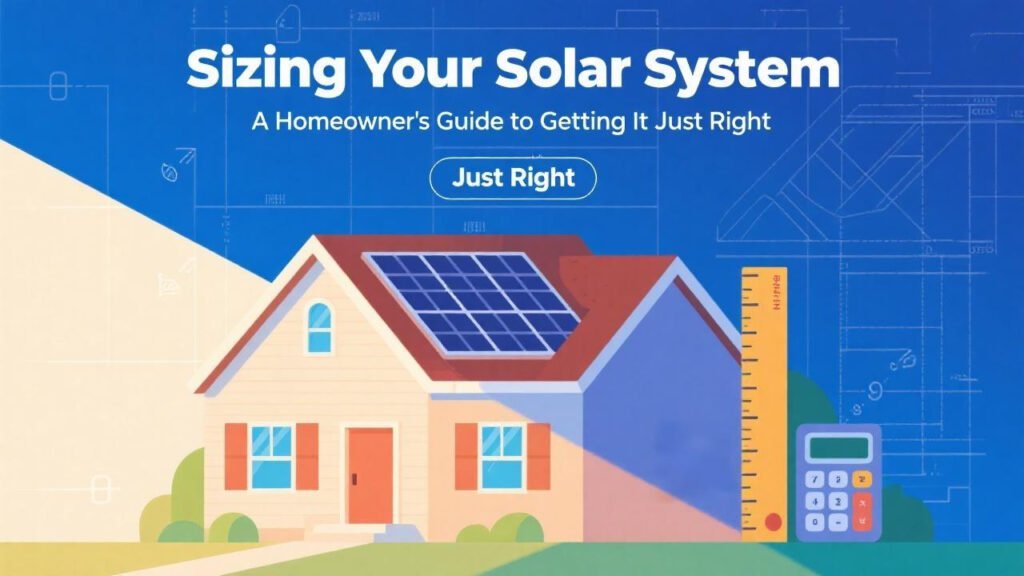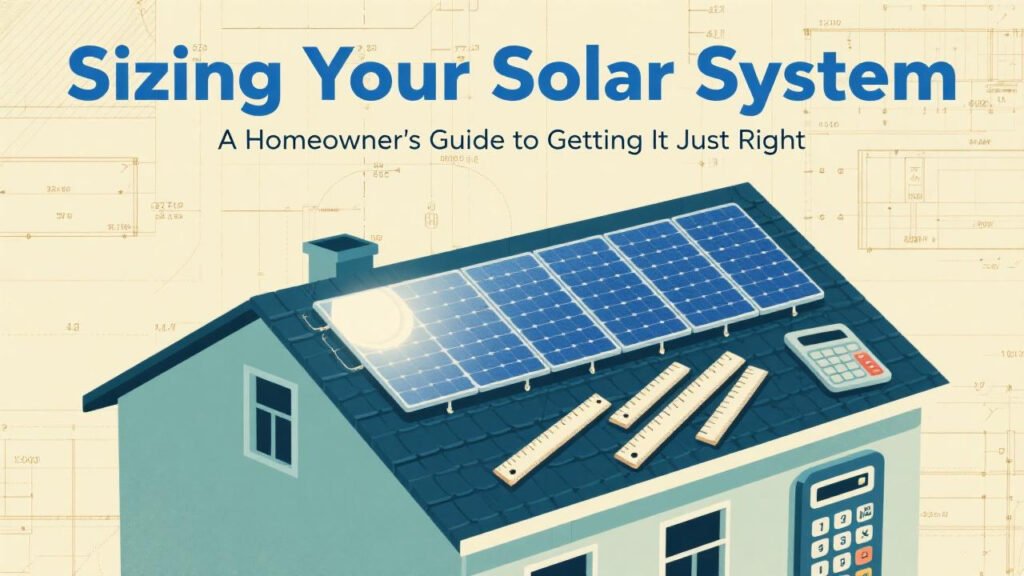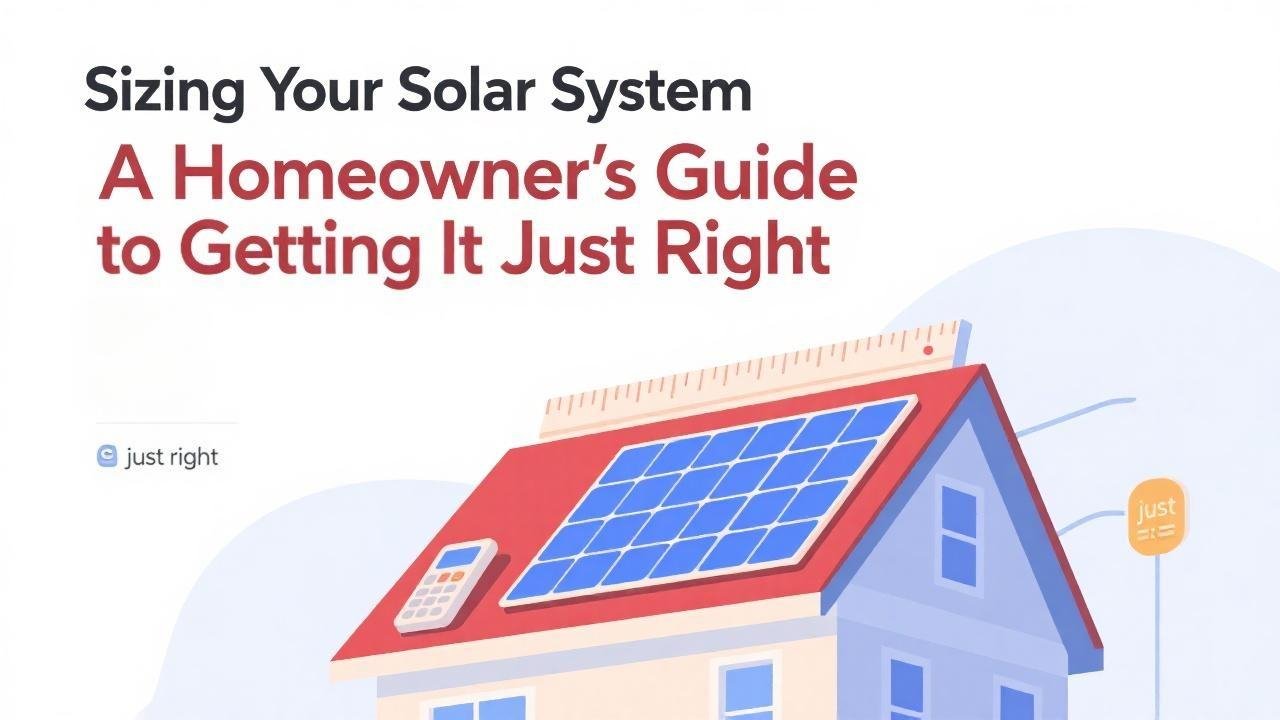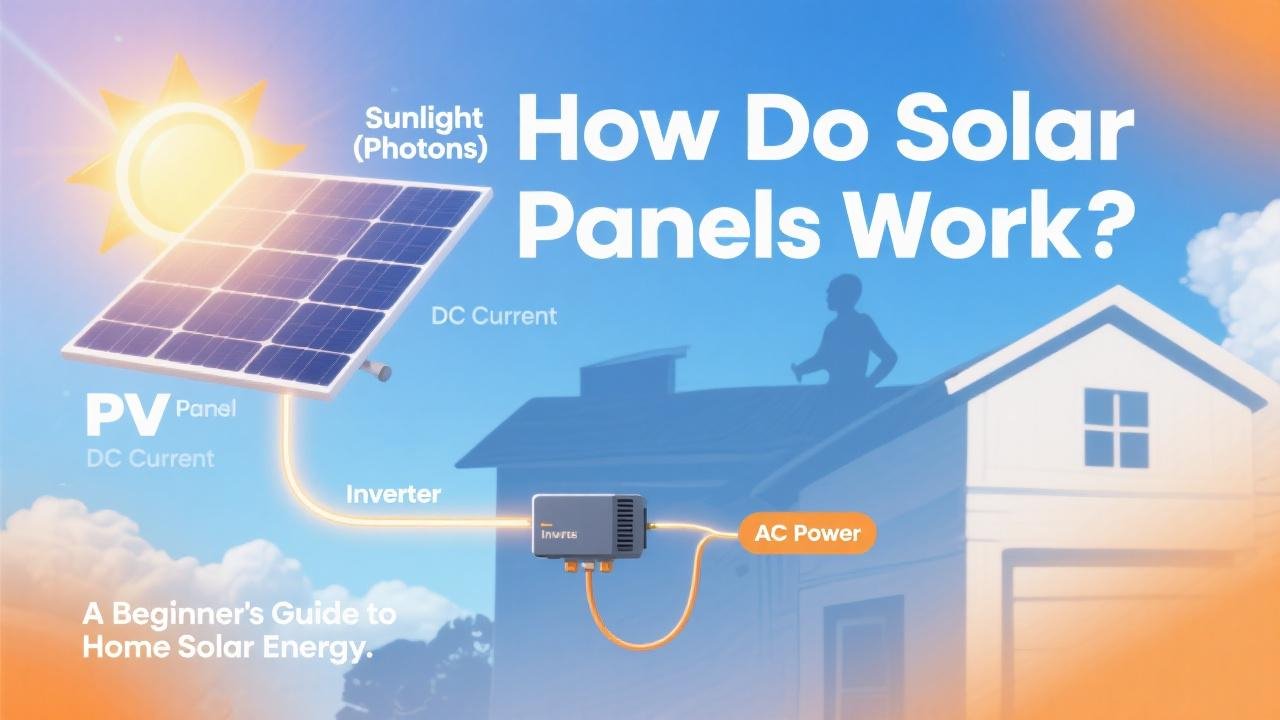Introduction: Finding Your Solar Sweet Spot
So, you’re ready to harness the power of the sun and invest in a solar panel system for your home. That’s a fantastic decision! But one of the most critical questions you’ll face is: “What size solar system do I actually need?” Choosing the right size is crucial. Too small, and you won’t maximize your potential savings or energy independence. Too large, and you might overinvest, especially if your local utility’s net metering policies don’t offer full retail credit for excess generation.
This guide will walk you through the key factors that determine the optimal solar system size for your home, helping you make an informed decision. And remember, tools like the EnergySage Solar Calculator can provide personalized estimates to get you started.
Step 1: Understand Your Current Electricity Consumption
The most important factor in sizing your solar system is how much electricity your household currently uses.
- Review Your Utility Bills: Gather your electricity bills from the past 12 months. Look for your energy usage in kilowatt-hours (kWh). Sum up the total kWh used over the year and then calculate your average monthly and daily usage. For example, if you used 10,500 kWh last year, your average daily usage is about 28.7 kWh (10,500 kWh / 365 days).
- Identify Usage Patterns: Note any seasonal variations. Do you use more electricity in the summer for air conditioning or in the winter for heating (if electric)? Understanding these patterns helps in fine-tuning system size. The average American home consumes about 10,500 kWh annually.

Step 2: Assess Your Home’s Solar Potential (Sunlight Availability)
The amount of sunlight your roof receives directly impacts how much electricity your panels can generate.
- Peak Sun Hours: This isn’t just the number of daylight hours. Peak sun hours refer to the average number of hours per day when the sun’s intensity is at its peak (1,000 watts per square meter). This varies significantly by geographic location and time of year. You can find peak sun hour maps for your area (NREL is a good resource) or your solar installer will calculate this. For instance, a location might average 4-6 peak sun hours per day.
- Roof Orientation and Tilt: In the Northern Hemisphere, south-facing roofs are ideal for maximizing sun exposure. East or west-facing roofs can still be viable but may produce slightly less energy. The tilt of your roof also plays a role.
- Shading: Any shading from trees, chimneys, neighboring buildings, or other obstructions can significantly reduce a solar panel’s output. Installers will conduct a shade analysis. If shading is unavoidable, technologies like microinverters or power optimizers can help mitigate losses by allowing individual panels to operate independently.
Step 3: Consider Solar Panel Efficiency and Wattage
Not all solar panels are created equal. Their efficiency and wattage ratings determine how much power they can produce.
- Panel Wattage (Power Rating): Residential solar panels typically range from 300 to 450 watts per panel under standard test conditions. Higher wattage panels produce more electricity.
- Panel Efficiency: This is the percentage of sunlight the panel converts into electricity. Most modern residential panels have efficiency ratings around 17% to 23%. Higher efficiency panels can produce more power in a smaller space, which is beneficial if you have limited roof area. For example, top-tier panels like Maxeon can exceed 24% efficiency.
Step 4: Calculate Your Target System Size (in Kilowatts, kW)
Now, let’s put these pieces together to estimate your required system size.
Basic Calculation:
Daily Energy Need (kWh) / Peak Sun Hours per Day = Required System Size (kW)- Example: If your home uses 30 kWh per day and your location gets 5 peak sun hours:
30 kWh / 5 hours = 6 kW- This means you’d need a 6 kW solar system to cover your daily energy needs under ideal conditions.
Accounting for System Inefficiencies: Solar systems aren’t 100% efficient. There are minor losses from wiring, inverter conversion, and potential degradation over time. It’s common to oversize the system slightly, perhaps by 10-25%, to compensate.
- Example:
6 kW * 1.20 (for 20% oversizing) = 7.2 kW
- Example:
Step 5: Determine the Number of Panels
Once you have your target system size in kW, you can calculate the number of panels:
- Calculation:
System Size (in watts) / Panel Wattage (watts per panel) = Number of Panels- (Remember to convert kW to watts: 1 kW = 1,000 watts)
- Example: For a 7.2 kW system (7,200 watts) using 400-watt panels:
7,200 watts / 400 watts/panel = 18 panels
So, in this example, you would need approximately 18 solar panels rated at 400 watts each.

Step 6: Factor in Future Energy Needs and Goals
Your current energy usage is a baseline, but consider any future changes:
- Electric Vehicles (EVs): If you plan to buy an EV, your electricity consumption will increase significantly. Factor in the additional kWh needed for charging.
- Home Electrification: Switching from gas appliances (furnace, water heater, stove) to electric ones will also increase your electricity demand.
- Household Changes: Adding family members or building an addition can impact energy use.
- Desired Offset: Do you want to offset 100% of your electricity bill, or is a partial offset acceptable? Some homeowners aim for 110-120% offset if net metering policies are favorable and they anticipate future needs.
Step 7: Understand Net Metering and Utility Policies
Your local utility’s net metering policy is crucial.
- Full Retail Credit: If your utility offers full retail credit for excess energy sent to the grid, sizing your system to meet 100% or even slightly more of your annual usage can be very beneficial.
- Avoided Cost or Lower Rates: If your utility compensates you at a lower “avoided cost” rate for excess generation (like under California’s NEM 3.0 ), significantly oversizing your system might not be as financially attractive. In such cases, pairing your solar system with battery storage to maximize self-consumption becomes more important.
- System Size Limits: Some utilities may have caps on the maximum system size eligible for net metering.
Why Professional Consultation is Key (and How EnergySage Helps)
While these steps provide a good framework for estimating your solar system size, a professional solar installer will conduct a detailed analysis tailored to your specific home and circumstances. They will use specialized software to model energy production accurately, considering all the variables.
This is where a platform like EnergySage becomes incredibly valuable.
- Multiple Quotes, Multiple Perspectives: By getting quotes from several vetted installers through EnergySage, you’ll see how different professionals approach your system design and sizing. This allows you to compare recommendations and understand the reasoning behind them.
- Expert Guidance: EnergySage provides access to unbiased Energy Advisors who can help you interpret quotes, understand sizing recommendations, and make sense of complex factors like panel efficiency and net metering policies.
- Transparent Information: The platform offers detailed information on equipment, installers, and financing options, empowering you to make a well-informed decision.
Powering Your Home Efficiently
Sizing your solar system correctly is a critical step in your solar journey. By understanding your energy consumption, assessing your home’s solar potential, considering panel specifications, and factoring in future needs and utility policies, you can arrive at an optimal system size. Don’t hesitate to use online tools like the EnergySage Solar Calculator for initial estimates, but always rely on detailed proposals from multiple qualified installers.
By partnering with trusted professionals, perhaps found through EnergySage, you can ensure your solar system is perfectly sized to meet your energy goals, maximize your savings, and provide clean power for years to come.



